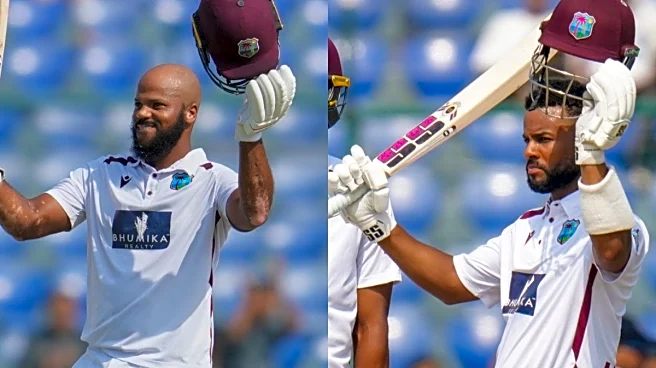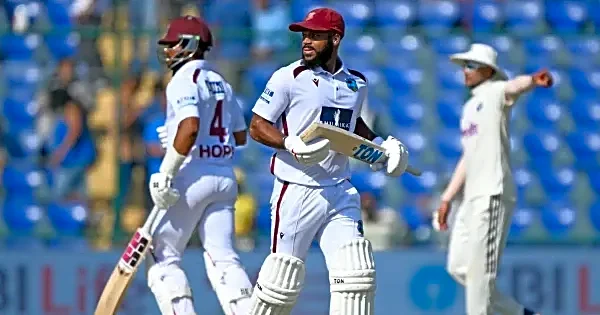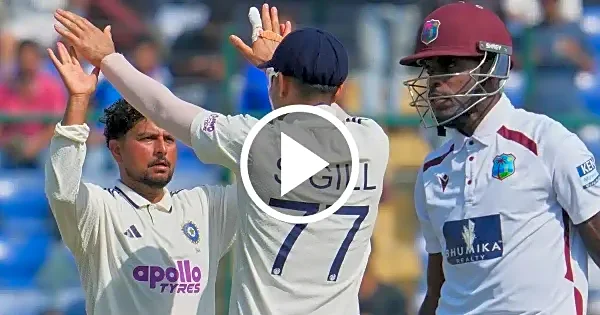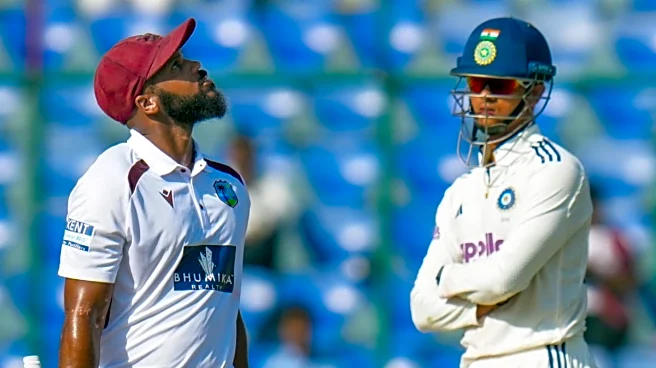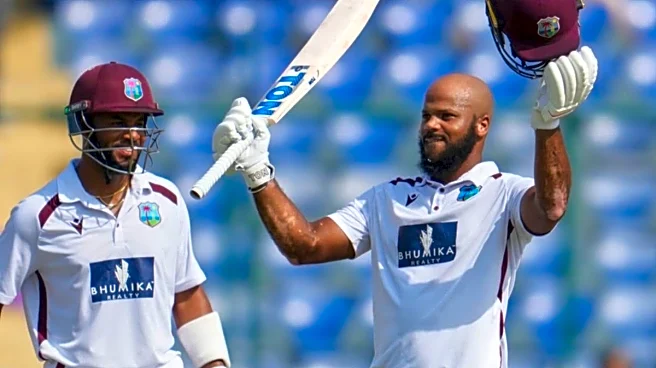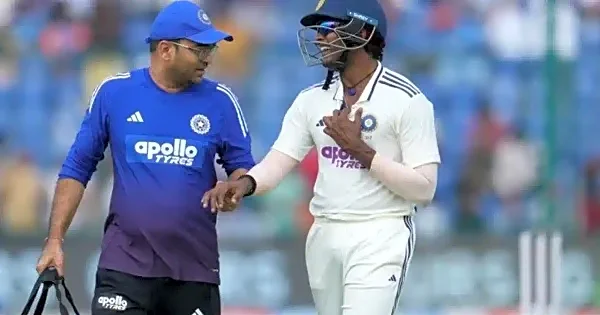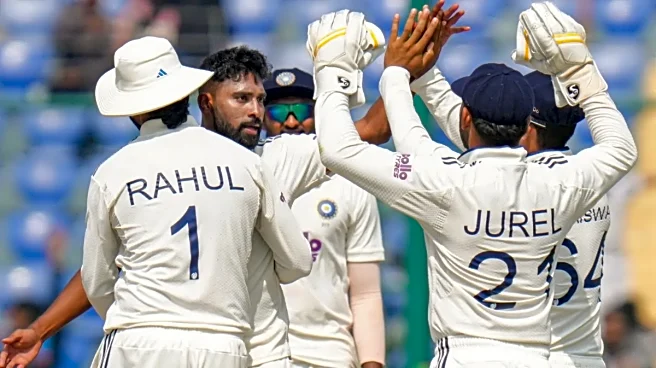The next time India find themselves in a position to enforce the follow-on, they will certainly recall the lessons from the Delhi Test against West Indies and think twice before making that call.
From dominating the game at one point to giving their opponent a whiff after misreading the conditions, India had an eye-opening experience at Kotla in the last two days. Centuries from John Campbell and Shai Hope, followed by a spirited fight from the lower order, stretched the Delhi Test into the fifth day. Although India need just 58 runs to pocket the series 2-0, the performance can’t be termed as dominant.
The fourth day’s play resumed from where Campbell and Hope had left yesterday – the pair facing Indian bowlers comfortably and piling on the runs.
The partnership rushed past 150 while Campbell converted his first fifty-plus score since 2022 to a maiden Test hundred. He reached the milestone with a maximum, becoming the 5th Windies batter to get his first-ever Test century with a six.
Although Jadeja trapping Campbell in front to break the 177-run partnership was a respite, Hope at the other end kept the hosts ticking along nicely. India captain Shubman Gill even tried swapping his spinners’ bowling ends, but it hardly yielded any difference.
Post-lunch, Hope achieved what he has been looking for since 2017 – a third Test hundred. A boundary off a thick outside edge helped him break an 8-year-long streak, becoming the batter with the most number of innings – 58 – between two Test hundreds.
From being down and out on the second day to making India regret enforcing the follow-on, the twin centuries infused new life into the West Indies camp. In just over two sessions, the visitors managed to avoid an innings defeat. However, the concentration aiding their rescue act was suddenly broken when Mohammed Siraj knocked over Hope with the second new ball.
Kuldeep Yadav dented their middle-order after having endured 17 wicketless overs.
The wrist spinner, getting hammered for a four and six by Tevin Imlach, trapped the keeper-batter with a perfect zip on the leg-stump line, and followed it up with a brilliant double-wicket maiden, removing Khary Pierre and West Indies captain Roston Chase in the 92nd over.
Jasprit Bumrah soon joined the act, striking twice in quick succession to dismiss Jomel Warrican and Anderson Phillip, leaving the visitors nine down with a slender lead of 41 runs.
But just when the game appeared for a quick finish, Justin Greaves and Jayden Seales extended India’s frustration.
Even a 30-minute extension to the second session wasn’t enough for India to put an end to West Indies’ innings. Greaves and Seales batted 22 overs and stitched a 79-run stand for the 10th wicket – the best by West Indies against India.
The last time Greaves went past fifty, against Bangladesh, he converted that into a maiden Test hundred. On Monday, he extended India’s wait to win the second Test with his first half-century in the longest format. However, Bumrah ended India’s toil and dismissed Seales on 32, wrapping up West Indies’ second innings on 390 runs.
Chasing 121, India lost Yashasvi Jaiswal early. However, the target was never going to be a threat. At the close of play, India were just 58 runs shy of completing a 2-0 clean sweep.
The victory is indeed at the doorstep, but India ended up toiling harder than to their liking.
“On this kind of a wicket, you just need to be a lot patient and try and hit those areas more consistently. That’s the only challenge. But obviously, it’s good to be bowling long spells. It’s very heartening to have actually taken 20 wickets on a wicket like this,” said India all-rounder Washington Sundar at the post-match presser.
It’s now rare for a Test in Indian conditions to go this long, but credit to Campbell and Hope for ensuring this one did. The pair extended their overnight partnership with the same grit to revive West Indies.
Later, Greaves displayed remarkable resilience, adding a crucial half-century and stitching a vital last-wicket stand with Seales that pushed the lead beyond 100.
The decision of enforcing follow-on may not have been the brightest idea, but a question looms: Did India underestimate the West Indies?
